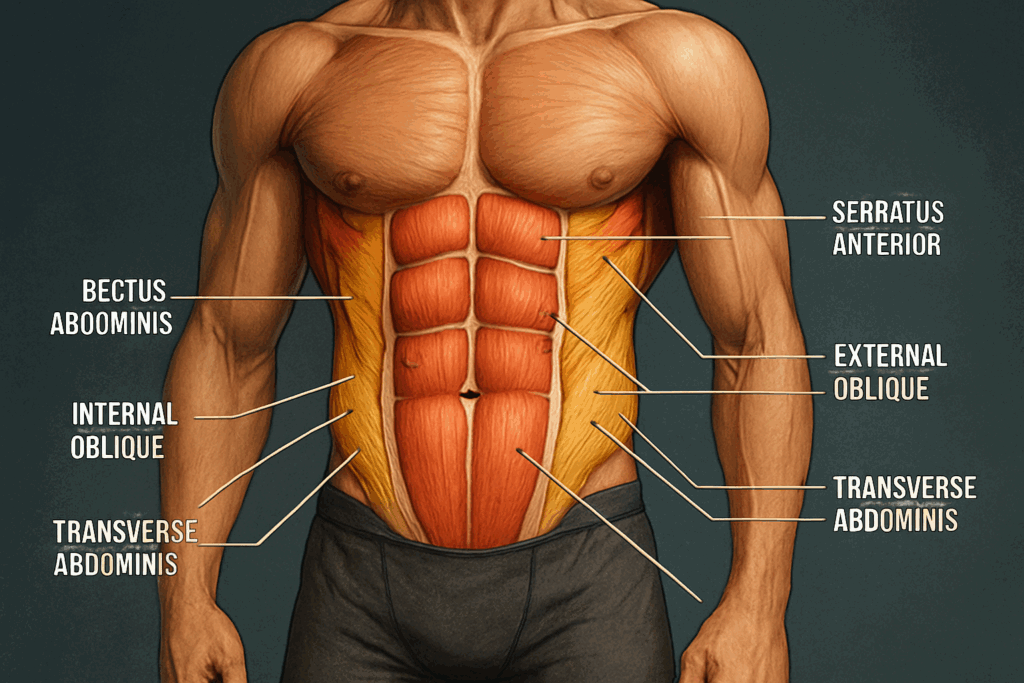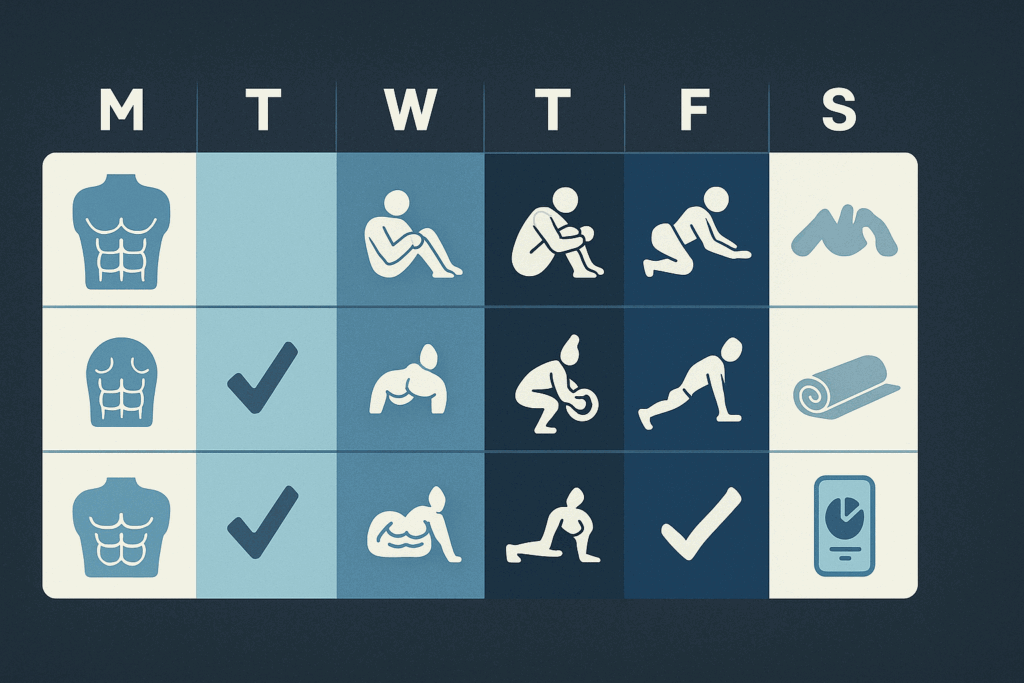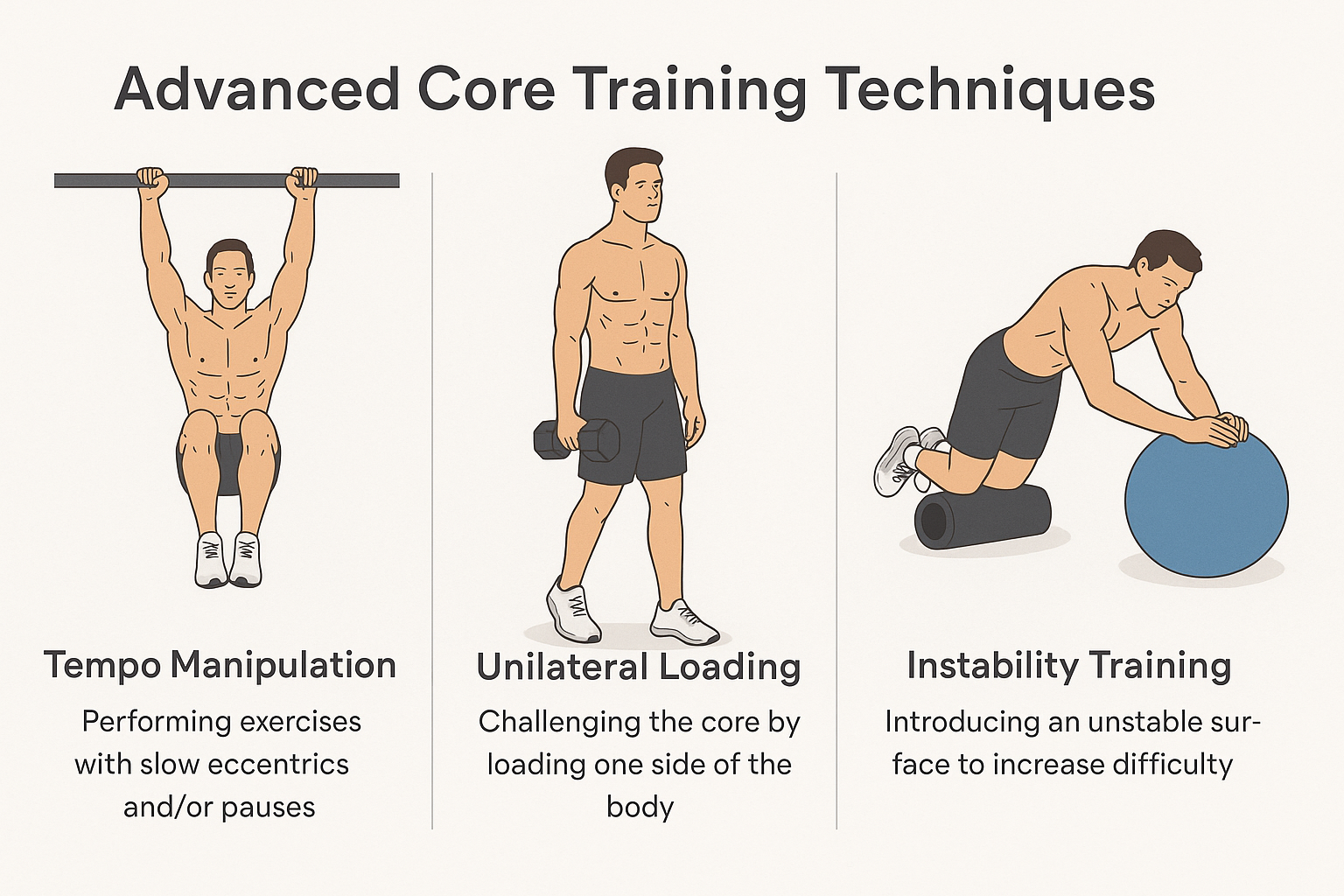Why a Targeted Workout Routine for Men Abs Matters More Than You Think
Building defined abs is not merely an aesthetic pursuit—it is a fundamental component of functional fitness, core stability, and athletic power. A well-designed workout routine for men abs goes beyond crunches and planks; it integrates compound lifts, controlled breathing techniques, strategic progression, and nutrition that supports muscle visibility. Too often, ab training is relegated to a few rushed exercises at the end of a session. However, men seeking to build true definition and core strength must treat abdominal development with the same strategic intent as any other major muscle group.
Abs serve as the central link between the upper and lower body, transmitting force and maintaining posture during dynamic movement. Whether sprinting, squatting, pressing, or pulling, strong abs enhance performance and protect the spine. Yet, the most compelling motivator remains visual: the defined rectus abdominis, obliques, and serratus anterior create the coveted “six-pack” and contribute to a lean, athletic silhouette. A comprehensive workout routine for men abs addresses both performance and appearance, ensuring each rep contributes to a stronger, more resilient core and a more sculpted physique.
You may also like: The Ultimate 30-Day Workout Plan for Men Working Out in the Gym: Proven Full Body Strength Exercises to Maximize Results
Foundations of the Ideal Workout Routine for Men Abs
Understanding the anatomy of the abdominal region is essential to training it effectively. The core is composed of several key muscles: the rectus abdominis (the visible “six-pack”), the external and internal obliques (responsible for rotation and side flexion), the transverse abdominis (deep core stabilizer), and supporting muscles such as the erector spinae and multifidus. A complete workout routine for men abs must stimulate all of these muscles through varied movement patterns and resistance levels.
Static holds, such as planks and hollow-body positions, activate the transverse abdominis and improve bracing capacity. Dynamic movements like hanging leg raises or weighted sit-ups target the rectus abdominis through spinal flexion. Rotational exercises, such as Russian twists and cable woodchoppers, engage the obliques. Finally, anti-rotation and anti-extension drills, such as Pallof presses and ab rollouts, condition the core to resist unwanted movement—a hallmark of athletic core strength.
The most effective workouts integrate these modalities into a periodized program. Training abs two to four times per week, with dedicated attention to recovery and progression, ensures continued development. Incorporating these sessions into your broader strength or conditioning split allows abs to develop synergistically with other athletic goals, making the entire training process more efficient and powerful.

Structuring Your Weekly Workout Plan for Abs Male Goals
To develop both visual definition and core integrity, a weekly workout plan for abs male athletes can adhere to a three-phase rotation: activation, overload, and recovery. Activation days—often placed at the beginning of the week—focus on neural priming, using exercises such as dead bugs, bird dogs, and bodyweight planks to improve motor control. This prepares the core for heavier compound movements throughout the week.
Overload sessions target muscular hypertrophy and strength. These can include weighted crunches, hanging leg raises with ankle weights, cable crunches, and dragon flags. Sets of 8 to 15 reps performed with controlled tempo and full range of motion stimulate muscle growth while reinforcing core engagement. Rotation and anti-rotation exercises are introduced during these sessions to enhance spinal resilience and movement variability.
Recovery-based sessions are equally critical. These may feature mobility drills, deep diaphragmatic breathing, foam rolling, and light core engagement movements to reduce soreness and reinforce neural pathways without inducing further fatigue. This phase supports tissue recovery and prevents overtraining, which is a common mistake in ab-focused programs.
Across a 7-day week, placing ab-specific work strategically—either as its own session or integrated into total-body workouts—ensures frequency without redundancy. For best results, track your weekly sets, increase resistance gradually, and rotate exercises every four to six weeks to avoid plateaus.

A Workout Routine for Men Abs That Enhances Strength and Aesthetics
Most men train abs with the singular goal of achieving visible definition, but a powerful core must also be strong and functional. A high-level workout routine for men abs does both: it sculpts the midsection while enhancing posture, bracing capacity, and performance in heavy lifts. This balance requires a mix of isometric holds, dynamic contractions, and rotational resistance in every session.
An effective abs session might begin with a compound movement like barbell overhead squats or farmer’s carries, which force the core to stabilize under load. These are followed by isolation exercises, such as decline sit-ups and hanging knee raises, to fatigue the rectus abdominis directly. The obliques are then trained through landmine rotations and side planks with reach. Finally, a burnout set such as a timed ab rollout or body saw challenges endurance and promotes hypertrophy through extended time under tension.
Emphasizing quality over quantity ensures sustainable progress. Using slow eccentrics (3-5 seconds on the lowering phase), pausing at peak contraction, and maintaining perfect form multiplies each rep’s effectiveness. Implementing progressive overload—by adding reps, resistance, or time—keeps the muscles adapting.
This structure trains the core in multiple planes and improves functional transfer to daily movement and athletic tasks. When followed consistently, it results in a shredded, high-performing midsection that reflects not just vanity, but total-body discipline.

Nutrition: The Unsung Hero of Any Workout Routine for Men Abs
Training without the right nutrition is like trying to sculpt granite with a sponge. No matter how strategic your workout routine for men abs, poor dietary habits will obscure the results beneath a layer of subcutaneous fat. Achieving visible abdominal definition requires a lean body composition, typically under 12-15% body fat for most men.
To attain this, a slight caloric deficit is necessary, generally 250–500 calories below maintenance, depending on activity level and metabolism. Protein intake should be prioritized—around 1.0–1.2 grams per pound of lean body mass—to support muscle repair and retention. Carbohydrates should be timed around training windows to optimize performance and recovery, while healthy fats contribute to hormone production and satiety.
Hydration, micronutrient sufficiency, and digestive health also influence how efficiently the body absorbs nutrients and eliminates waste. Whole, minimally processed foods should dominate the plate: lean meats, fibrous vegetables, fruits, nuts, and complex carbohydrates like quinoa and oats. Alcohol, sugar, and ultra-processed snacks should be minimized, especially during cutting phases.
Meal timing and consistency further reinforce success. Eating at regular intervals (every 3–4 hours) maintains metabolic efficiency and curbs hunger. Tracking intake via apps or journals provides feedback and accountability, allowing for real-time adjustments that maximize fat loss without sacrificing energy or muscle.
Ultimately, abs are forged in the gym but revealed in the kitchen. A strategic nutrition plan elevates every rep, burn, and flex from your workout plan for abs male goals into visible, sustainable results.

Advanced Core Training Techniques for Defined Results
Once foundational strength is established, incorporating advanced techniques into your workout routine for men abs can dramatically enhance development. These methods challenge the muscles through new stimuli, pushing adaptation and breaking through plateaus. Some of the most effective advanced strategies include tempo manipulation, unilateral loading, and instability-based training.
Tempo manipulation involves slowing down the eccentric phase or adding isometric pauses during the movement. This increases time under tension and activates more motor units, resulting in denser muscle fibers. For example, performing hanging leg raises with a 3-second lower phase and 1-second pause at the top increases demand without additional equipment.
Unilateral loading forces the body to resist rotational forces. Suitcase carries, single-arm overhead presses, and side planks with weighted reach-outs are all examples. These exercises engage the obliques and deep stabilizers to a higher degree, fostering balance and symmetry.
Instability training using tools like stability balls, BOSU balls, or suspension trainers recruits more core muscles by forcing the body to stabilize. Exercises such as stir-the-pot, TRX body saws, and Swiss ball rollouts intensify engagement, especially in the transverse abdominis and lower abs.
While these methods are potent, they must be used judiciously. Overcomplicating a routine can compromise form and recovery. Incorporate one or two advanced techniques per week and monitor how your body responds. Rotate variations every month to maintain novelty and progression.
When integrated properly, advanced core methods bring sharpness and resilience to your abs, elevating your workout routine for men abs from effective to elite.

Recovery and Hormonal Health in Ab Development
Abdominal training, especially when aggressive or frequent, can strain not just the muscles but also the central nervous system and endocrine system. Recovery and hormonal health are often overlooked in a workout routine for men abs, yet they are the silent drivers of success.
Sleep is the cornerstone of recovery. Seven to nine hours of high-quality rest per night promotes growth hormone release, testosterone production, and cellular repair. Sleep deprivation raises cortisol levels, a stress hormone that promotes fat storage—particularly in the abdominal region.
Chronic stress also suppresses testosterone and growth hormone, making it harder to build muscle or lose fat. Managing stress through meditation, breathwork, cold exposure, or even social connection can significantly impact your ability to maintain a lean, defined midsection.
Active recovery practices such as foam rolling, mobility drills, yoga, and light aerobic sessions accelerate nutrient delivery, clear waste products, and reduce muscle tension. Periodic deload weeks, where training volume or intensity is reduced, also allow the nervous system and joints to recuperate.
Hormonal optimization isn’t just about performance—it’s about sustainability. Blood panels to assess testosterone, vitamin D, thyroid function, and inflammation markers can reveal hidden obstacles. Addressing these through lifestyle and medical consultation ensures your workout plan for abs male goals is aligned with your biology.
When recovery and hormones are dialed in, progress becomes not only faster but more permanent. It’s not about grinding harder—it’s about recovering smarter.

Building Your Personalized Workout Routine for Men Abs
Every man’s body is different, shaped by genetics, history, goals, and lifestyle. A personalized workout routine for men abs takes these into account and crafts a system that evolves with progress. Rather than copying a one-size-fits-all plan, focus on principles and then tailor specifics.
Start by assessing your current level: can you perform a 60-second plank? Ten hanging leg raises? What’s your body fat percentage? Knowing your starting point allows for appropriate scaling. If you’re a beginner, emphasize movement quality and control. If you’re intermediate or advanced, challenge load, time under tension, and complexity.
Next, map your week. Which days are best for training abs, given your existing schedule? Is your main goal fat loss, hypertrophy, or performance? Align your ab sessions with those objectives. For example, pair ab hypertrophy work with upper-body days, and integrate core stabilization drills into leg days.
Choose 4–6 core exercises per session from varied categories: anti-extension (ab rollout), anti-rotation (Pallof press), dynamic flexion (cable crunch), loaded carry (farmer’s walk), and rotation (Russian twist). Cycle your exercises every 4–6 weeks and progress systematically.
Finally, track results. Use photos, strength logs, or endurance benchmarks. Note when exercises feel easier or when form improves. Your plan should evolve—what works now may stall later. By taking ownership of your routine and refining it regularly, you not only build abs—you build mastery.

FAQ: Expert Answers About the Ultimate Workout Routine for Men Abs
1. What is the biggest mistake men make when starting a workout routine for men abs?
One of the most common mistakes is jumping into advanced core exercises without mastering the basics. Beginners often overlook foundational stability and control in favor of flashy movements like hanging leg raises or ab rollouts. This can lead to compensations, poor posture, and injury. A workout routine for men abs should begin with activating the transverse abdominis through planks, dead bugs, and bird-dogs before progressing to more complex exercises. Understanding progression and respecting foundational mechanics ensures long-term core development without setbacks.
2. How does nutrition factor into a workout plan for abs male athletes?
Nutrition is a non-negotiable element for visible abdominal definition. Even the most meticulously designed workout routine for men abs won’t yield visible results if it’s undermined by poor dietary habits. Men seeking definition should prioritize lean proteins, complex carbohydrates, and healthy fats, maintaining a moderate caloric deficit for fat loss. Hydration also plays a key role in reducing bloating and enhancing muscle tone. For optimal performance and physique, timing meals around workouts—with carbs pre-training and protein post-training—can further amplify results.
3. Can you combine cardio with a workout routine for men abs for faster results?
Yes, integrating cardio into your workout routine for men abs is a strategic way to accelerate fat loss and uncover abdominal muscle. High-intensity interval training (HIIT) is particularly effective, as it burns calories efficiently while preserving muscle mass. Steady-state cardio also supports active recovery and increases overall energy expenditure. Ideally, cardio should complement rather than replace strength-based ab work. A balanced program might alternate resistance training days with HIIT or include cardio circuits that incorporate ab-focused movements for compound benefits.
4. How often should men train abs for maximum results?
For most men, training abs two to four times per week is sufficient when following a structured workout plan for abs male goals. Overtraining the abs can be counterproductive, as the abdominal muscles need recovery like any other muscle group. The key is intensity and variety rather than daily volume. Rotating between upper abs, lower abs, obliques, and transverse abdominis work ensures balanced development and minimizes adaptation. Including abs at the end of a strength session or dedicating a day to core-focused circuits both work well.
5. What are the best compound exercises to support a workout routine for men abs?
While isolated ab exercises are useful, compound lifts are essential for developing a strong and functional core. Movements such as front squats, deadlifts, overhead presses, and weighted carries (e.g., farmer’s walks) challenge the core to stabilize under load. These exercises activate the rectus abdominis, obliques, and deeper stabilizers in a real-world context. Including these lifts in a workout routine for men abs creates transferable strength that supports not only aesthetics but also performance in sports and daily activities.
6. How can beginners modify a workout plan for abs male to fit their level?
Beginners should focus on mastering control, form, and core activation before attempting high-rep or weighted ab routines. A scaled workout plan for abs male beginners might prioritize planks, glute bridges, dead bugs, and cable holds over more advanced moves like hanging leg raises or dragon flags. Volume should be kept moderate, with an emphasis on maintaining good form through each rep. As core endurance improves, men can gradually incorporate load, reps, and complexity. Progress should be guided by consistent assessment and self-awareness.
7. What role does sleep and recovery play in abdominal development?
Sleep and recovery are often underrated but critically important in a workout routine for men abs. Growth hormone and testosterone, both essential for muscle repair and fat metabolism, are primarily released during deep sleep cycles. Inadequate rest can increase cortisol, a stress hormone that promotes fat retention around the midsection. Quality sleep of 7 to 9 hours per night supports hormonal balance, mental clarity, and physical recovery. Stretching, foam rolling, and mobility work also aid in preventing overuse injuries in the hip flexors and lower back.
8. How do you maintain motivation while following a workout routine for men abs?
Staying motivated requires a mix of structure, variety, and measurable progress. Setting short-term goals, such as holding a plank for 60 seconds or achieving a new personal best on hanging leg raises, keeps the journey dynamic. Incorporating challenges, partner workouts, or tracking apps can also enhance commitment. Recognizing that a workout plan for abs male transformation takes time helps men stay mentally resilient through plateaus. Motivation also grows when routines align with personal values and lifestyle, making fitness a rewarding experience rather than a chore.
9. Are weighted ab exercises necessary in a workout routine for men abs?
Weighted ab exercises are not mandatory but can significantly enhance muscle definition and strength for advanced athletes. Once foundational stability and bodyweight control are achieved, incorporating exercises like cable crunches, weighted sit-ups, or decline bench twists introduces progressive overload. However, caution must be exercised to avoid compromising form. These movements should be integrated gradually and paired with proper bracing techniques. For men focused on hypertrophy or enhanced core strength, weighted variations add depth to a well-rounded workout routine for men abs.
10. How long does it typically take to see results from a structured workout plan for abs male transformation?
The timeline for visible results varies depending on body composition, consistency, and dietary habits. Most men can expect noticeable changes within 6 to 12 weeks when consistently following a workout routine for men abs alongside a balanced diet and recovery strategy. Early progress often includes improved posture, enhanced core stability, and better exercise performance. Visible abs require reaching a relatively low body fat percentage, typically between 10% and 15% for men. Patience and adherence to the process are key to sustainable, long-term transformation.
Conclusion: Transforming Your Core with Intent and Strategy
A powerful, defined core isn’t reserved for fitness models or elite athletes. It’s the product of deliberate planning, intelligent training, and consistent execution. A results-driven workout routine for men abs does more than carve aesthetics—it enhances posture, athleticism, and confidence.
When paired with smart nutrition, focused recovery, and adaptive progression, your core training becomes a cornerstone of your fitness identity. From foundational holds to advanced techniques, every movement should reflect purpose. And every program should evolve with your goals, ensuring you stay challenged and engaged.
Whether you’re embarking on your first workout plan for abs male transformation or refining years of experience, the path is clear: train smart, fuel well, recover fully, and progress intentionally. In doing so, you’ll not only uncover visible abs—you’ll build the strength and self-discipline that radiate from within.
Let this blueprint guide your pursuit. Your best core is already inside you—waiting to be revealed, one rep at a time.





